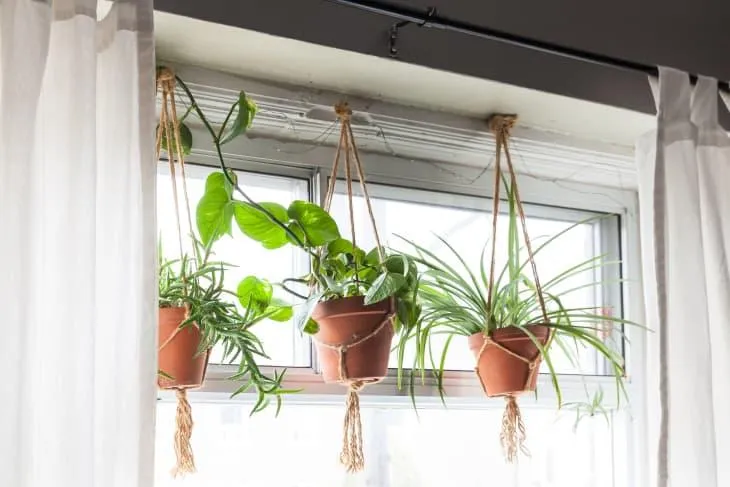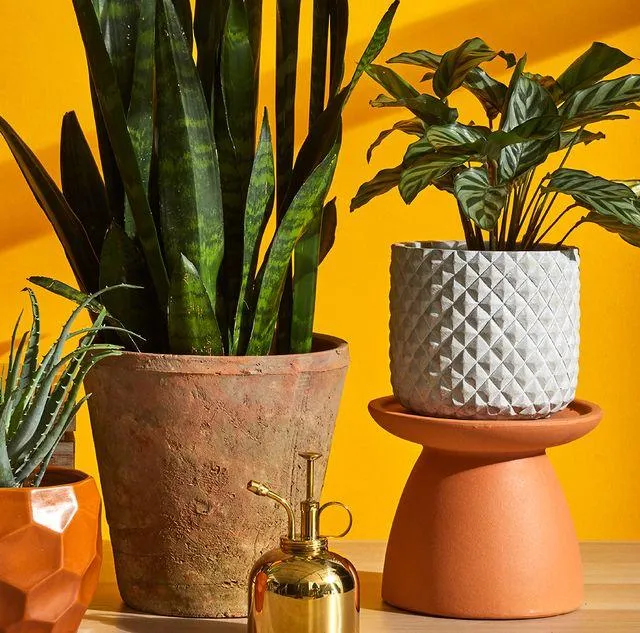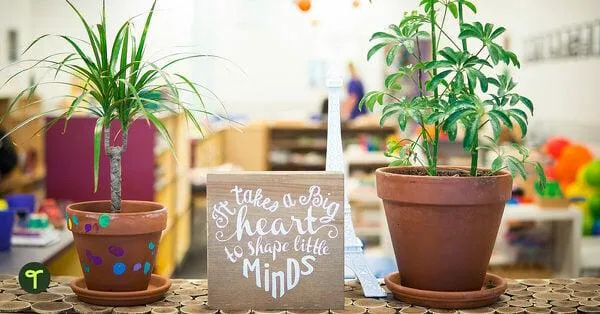All You Need to Know About Hanging Plants in Your Home
If you’re interested in adding some greenery to your indoor spaces but don’t have room for plant stands or pots on the floor, hanging plants are a great option to consider. In this article, I’ll cover everything you need to know to successfully care for hanging plants inside your home, from choosing the right types of plants to watering and maintenance tips.
What Types of Plants Are Best for Hanging?
There are many different plant varieties that thrive when hung. Here are some of the top choices:
- Pothos – Also known as devil’s ivy, pothos is practically indestructible. It grows quickly and trails beautifully. It does well in low to medium light.
- Philodendron – With its heart-shaped leaves, philodendron comes in many varieties like brazil and micans. It’s extremely low maintenance.
- Swedish Ivy – This ivy grows dense, full leaves and tolerates low light. It’s excellent for trailing over the side of a pot.
- Spider Plant – Producing plantlets on long stems, spider plants thrive in hanging baskets. Their grassy leaves provide nice texture.
- English Ivy – True to its name, English ivy climbs beautifully. UseHooks and stakes to let it trail gorgeously.
How to Choose the Right Pot
When selecting hanging planters, look for pots with drainage holes. Terracotta and plastic are good lightweight options that won’t crack or break easily if they dry out fast. Go for baskets, cascading pots, or pots with hangers rather than heavy ceramic containers.
Make sure to use a waterproof saucer under each pot to catch excess water. Consider the size of your plants – use pots just a few inches wider for good growth. Overly large pots can stay soggy.
The Best Spots to Hang Plants
Generally, the brightest indoor areas are best. East-, west-, and south-facing windows receive the most direct sunlight, which most plants thrive in. However, be wary of intense afternoon sun, which can scorch leaves.

You can also hang plants above kitchen counters where the humidity from cooking helps. Staircases, coffee tables, mantels, and over bathtubs are other clever spots to try. Make sure hooks or hangers are securely installed in wall studs or ceiling beams to support the weight.
Tips for Watering Hanging Baskets
From my experience, one of the biggest challenges of hanging plants is proper watering. Here are some tips:
- Check soil moisture by sticking your finger an inch into the pot daily.
- Water thoroughly whenever the top inch of soil is dry. Let excess drain out the bottom holes.
- In hot/dry climates, water every few days. In cooler climates, once per week may suffice.
- Avoid getting water trapped in leaf axils, which can cause rotting.
- Use a reservoir saucer to extend time between waterings for fast-draining soils.
Misturing foliage periodically also helps, but be sure to water from below as the primary source of moisture.
Fertilizing and Pruning Hanging Plants
During the growing season from spring to fall, use a diluted liquid fertilizer every few weeks according to label instructions. Houseplant fertilizer works well.
Prune off any dead or leggy growth to keep plants bushy. You can simply cut stem sections above a leaf node. Many types like English ivy will sprout new stems from pruned areas.

Spider plants and Tradescantia varieties produce offshoots called plantlets ideal for propagating. Once they have a few roots, cut them off to make new hanging plants!
Dealing with Pests and Diseases
Indoor pests pose the main disease risk for hanging pots. Check closely for signs of insects like aphids, scale, or spider mites. Isolate any infected plants and spray leaves with a soapy water mixture as a natural treatment.
For severe infestations, use registered houseplant insecticides carefully following label directions. Rotate different pesticides to avoid resistance. Fungal and bacterial diseases can also strike – remove any diseased parts and improve air circulation.
Creating a Hanging Garden Indoors
With some creativity, you can form entire “hanging gardens” inside your home! Cluster plants of different textures, colors, and sizes together in large hanging baskets or multi-tiered wooden racks. Use trailing varieties to cover the sides of shelves.
Consider rugged air plants that don’t require soil. Macrame hangers are awesome for grouping several pots artistically. Play around with height, fullness, and focal points until you achieve a lush jungle vibe hanging from your walls and ceiling!

Troubleshooting Hanging Plant Issues
If leaves start to yellow or plants fail to thrive, here are some common problem-solvers:
- Underwatering – Increase frequency or use self-watering pots.
- Overwatering – Improve drainage, use a pebble tray, or repot in well-draining soil.
- Not enough light – Move to a brighter spot and gradually adjust plants.
- Fertilizer deficiency – Apply nutrients according to schedule.
- Cold damage – Move away from drafts and provide insulation in winter.
- Pests/disease – Identify and treat the specific issue promptly.
With a little TLC, your hanging pots will reward you with luscious foliage indoors for many seasons to come. Thanks for reading – I hope these tips help you care for your new hanging garden like a pro!
Common Hanging Plants for Indoor Decor
| Plant | Light Needs | Watering Needs | Best Location | Height |
|---|---|---|---|---|
| Pothos | Low | Let dry between waterings | Any | Up to 6 feet |
| Philodendron | Medium | Water when top inch of soil is dry | Bright, indirect light | Up to 6 feet |
| Spider Plant | Low | Let dry between waterings | Any | Up to 3 feet |
| English Ivy | Low to medium | Water when top inch of soil is dry | Bright, indirect light | Vines indefinitely |
| Chinese Evergreen | Medium | Water when top inch of soil is dry | Bright, indirect light | Up to 5 feet |
FAQ
-
What kinds of plants can I hang?
There are basically many different types of plants that grow well when hung. Some popular hanging plant options include pothos, spider plants, philodendrons, english ivy, and succulents. Pretty much any plant that has vines or trailing stems will work well hanging in a pot.
-
Where’s a good place to put hanging plants in my home?
Hanging plants look amazing over kitchen counters, above windows, or dangling from the ceiling. You can sort of hang plants anywhere – on patios, by front doors, or even in a bathroom if there’s enough light. Maybe put one in a macrame hanger above your bed for a calming vibe. The options are endless!
-
How do I care for hanging plants?
Despite some plants being easy to care for, proper care is still important to keep your hanging plants healthy. You’ll need to water them regularly, but not overwater. Check the soil moisture with your finger. Fertilize during the growing season. Also, hang plants where they’ll receive adequate sunlight. Too little and they’ll get leggy. Thanks to their viney nature, pruning and propagating is a breeze too.

-
Are hanging plants harder to care for than potted plants?
On the one hand, hanging baskets do not have good drainage, so overwatering can be an issue. However, hanging plants tend to dry out faster than potted plants, so you don’t have to water them as often. As long as you check the soil moisture regularly, hanging plants are not really any harder to care for overall. Using well-draining soil and a drip tray makes watering a cinch.
-
What’s the best way to display multiple hanging plants together?
You can make a stunning hanging garden display by grouping several plants in one large macrame hanger or hanging basket. Try combining trailing vines with bushier plants for visual interest. Make sure to choose plants with complementary colors and forms. You might be amazed, as composition is key. Ask your local nursery for grouping suggestions tailored to your space. Perhaps try an Instagram search for “hanging plant displays” too – there’s stunning inspo out there!
-
How do I prevent my hanging plants from getting too heavy?
Over time, as your hanging plants grow larger, the weight of the soil and foliage can put unnecessary strain on fixtures. To avoid this, follow some basic rules. Only use lightweight containers. Pot up plants in terra cotta versus glazed ceramic. And be sure to use an airy, well-draining potting mix. You should also top off pots with decorative mulch versus more soil. Finally, don’t overwater to prevent soggy, heavy pots. Taking these steps will allow your hanging gardens to thrive for years to come!
